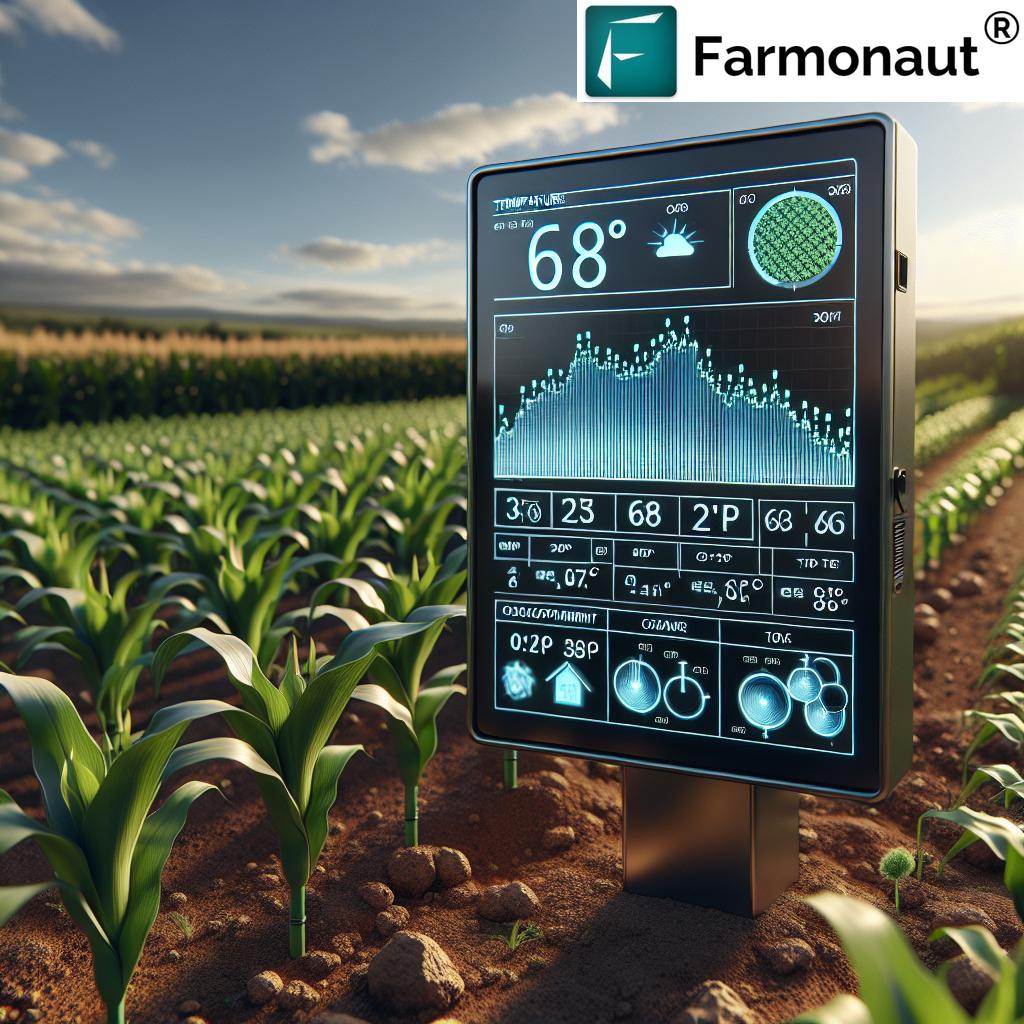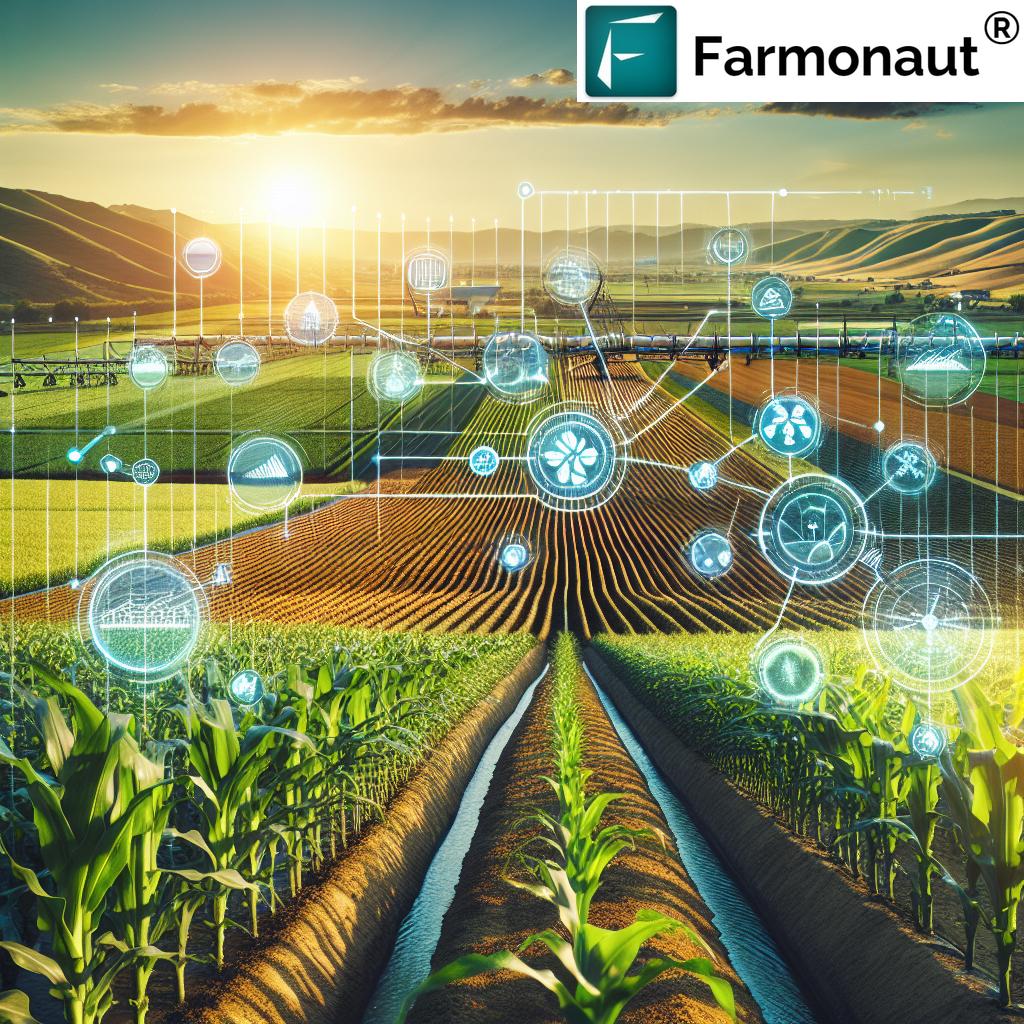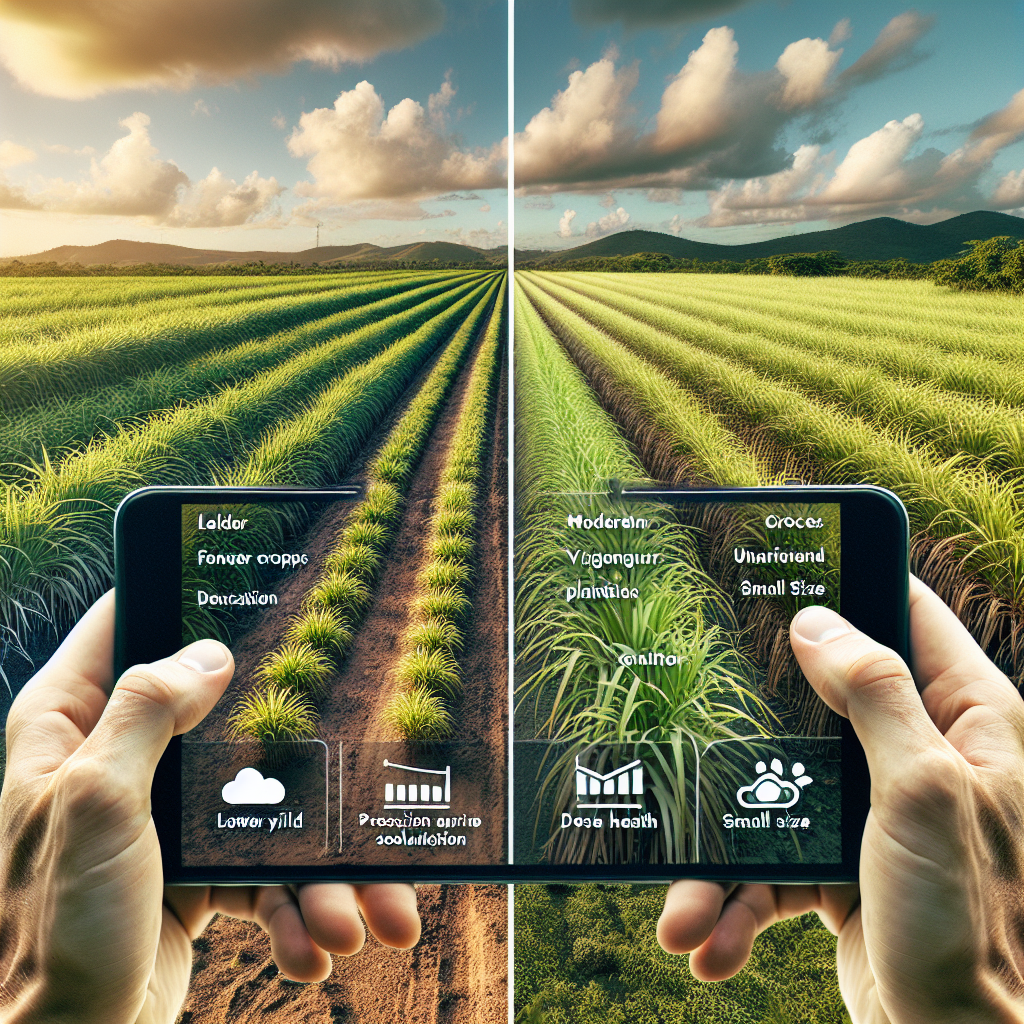Agriculture Field Force Management: Best Innovations 2025
“By 2025, up to 68% of farms will use AI-powered field force management solutions to boost operational efficiency.”
This game-changing statistic underscores just how integral technology and data-driven strategies have become to every modern field of agriculture.
Summary: Advancing Agriculture Field Force Management (2025 Perspective)
In today’s evolving landscape of agriculture, agriculture field force management is a cornerstone—boosting productivity, ensuring prudent resource use, and supporting global food security. As we approach 2025, advanced tech integration and innovative management strategies in the agricultural sector are rapidly transforming traditional farming practices. These cutting-edge tools are optimizing human and material resources, improving sustainability, and helping farms meet ever-growing global food demands.
Efficient field force management in agriculture refers to the strategic coordination, deployment, and supervision of personnel who work directly within fields—laborers, agronomists, operators, and technical experts responsible for everything from planting to pest control. The impact of managing this diverse workforce reverberates across farm yield quality, operational costs, labor utilization, and environmental sustainability.
In the face of labor shortages, rising environmental concerns, and mounting operational demands, optimizing every part of the agriculture field force management process is not just optional—it’s an absolute necessity.
The Importance of Agriculture Field Force Management
Agriculture field force management stands as a vital necessity in modern farming and broader agriculture resource management. Let’s break down why it’s become the cornerstone of operational efficiency in the fields of agriculture:
- Resource Efficiency: Streamlined field operations reduce redundancies, conserve inputs like water and fertilizers, and optimize the use of expensive machinery.
- Boosted Productivity: Timely deployment and coordination of field labor ensure that planting, irrigation, and pest control align perfectly with crop cycles, maximizing yield and minimizing losses.
- Sustainability & Compliance: Modern field force management enables farmers to implement sustainable practices and environmental interventions, meeting consumer and regulatory expectations.
- Adaptability to Challenges: From climate variability to labor shortages, effective management allows rapid response to evolving threats and demands in the field.
In essence, agriculture field force management has shifted from being an operational afterthought to an indispensable part of the best fields in agriculture—enabling farms to be resilient, responsive, and responsible in a complex global environment.
Current Challenges in Agriculture Field Force Management
Despite advances in technology, many farms still face critical hurdles in managing their agriculture field forces. Below, we explore the most prevalent challenges which impact productivity, sustainability, and profitability in the agricultural sector as we approach 2025:
- Labor Shortages and Mobility
- Seasonal demand spikes make it difficult to recruit and retain skilled laborers and operators. Efficiently mobilizing and coordinating these workers across large, remote farmlands presents ongoing logistical obstacles.
- Many regions experience acute labor shortages, especially during peak planting and harvesting seasons.
- Lack of Instantaneous Visibility
- Without real-time monitoring of activities and field conditions, supervision is difficult, leading to inefficiencies and missed opportunities for timely interventions.
- Managers struggle to assess tasks, leading to delays in pest control, irrigation, or harvesting.
- Resource Inefficiency
- Misallocation and poor communication result in under-utilized resources (e.g., machinery and fertilizers), excessive labor costs, and redundant activities.
- Optimization of task deployment based on real-time needs is generally lacking, especially on larger farms.
- Data Management and Integration
- Fragmented data systems reduce the ability to analyze past performance, forecast future needs, and implement best practices efficiently.
- Poor data integration hampers smart decision-making and the implementation of advanced resource management solutions.
These challenges highlight why robust agriculture field force management is central to the ongoing digital transformation of the field of agriculture.
“Automated scheduling systems can cut agriculture labor costs by 30% on farms integrating advanced tech by 2025.”
Technological and Strategic Innovations Driving Agriculture Field Force Management in 2025
The field of agriculture is at a transformative crossroads in 2025. Widespread adoption of next-generation technology, strategic data-driven platforms, and sustainable resource management are defining the best fields in agriculture. Here’s how crucial innovations are shaping the sector’s future:
1. Precision Agriculture & IoT Sensor Networks
IoT devices now provide instantaneous visibility into soil moisture, crop health, and pest hotspots. Managers deploy resources precisely—reducing waste and improving yield quality. IoT-powered agriculture field force management tools enable:
- Targeted application of water, fertilizers, and pest control inputs
- Automated alerts for timely interventions in remote or large fields
- Real-time data-driven decision making
2. AI-Based Workforce Scheduling & Predictive Analytics
Artificial intelligence now analyzes historical and live data to forecast labor needs, schedule workers efficiently, and predict operational bottlenecks. This strategic deployment of human resources ensures that no task is overlooked and that critical activities (like harvesting or irrigation) occur precisely when needed.
3. Mobile Staff Management Platforms
Smartphones and custom apps facilitate seamless communication, supervision, and task tracking. Supervisors can:
- Assign tasks and monitor progress in real-time
- Communicate instantly with workers scattered across vast fields
- Validate completion and quality of assigned activities
This mobile-centric approach to management is optimally suited for agricultural operations spanning hundreds or thousands of hectares.
4. Drone-Assisted Monitoring and Interventions
Drones have revolutionized the field of agriculture—providing overhead views for crop scouting, precise pest detection, and targeted pesticide/fertilizer application. This reduces manual labor, minimizes chemical use, and allows timely interventions.
5. Automated Reporting Tools and Data Analytics Platforms
Centralized digital platforms consolidate diverse datasets from IoT sensors, AI platforms, and mobile apps—giving agriculture managers an integrated, instant view of worker activity, resource utilization, and crop condition.
- Automated compliance reporting for environmental and regulatory requirements
- Historical analysis for continuous improvement and accountability
- Facilitation of block-chain based product traceability
6. Satellite-Based Crop Monitoring
Satellite imagery is a hallmark of advanced agriculture resource management in 2025. Farm operators now benefit from affordable, high-resolution imagery to spot field variability, diagnose issues, and optimize resource deployment across vast and remote farmlands. This ushers in more effective, scalable field force management.
? Ready to take your field management into the future? With Farmonaut’s agriculture advisory solutions, you can monitor fields, plan interventions, and optimize labor deployment—all via secure web, Android, and iOS apps.
7. Blockchain Traceability Platforms
Transparency and accountability are more important than ever in agriculture, especially as global markets and regulatory frameworks tighten. Blockchain-based tools, such as those offered by Farmonaut’s traceability platform, ensure every aspect of the field force’s work—from planting to processing—can be instantly verified and securely recorded. This fosters trust, mitigates fraud, and streamlines agricultural exports.
8. Carbon Footprinting & Environmental Impact Monitoring
Sustainable agriculture field force management helps farms not just meet production goals but also control their carbon footprint. Tools like Farmonaut’s carbon footprint monitoring provide real-time data on emissions, enabling precision interventions and compliance with sustainability certifications.
9. Integrated Fleet and Resource Management
With streamlined fleet management systems, farms can track the usage and efficiency of agricultural machinery, reducing downtime, ensuring timely servicing, and maximizing ROI. Resource management tools help allocate labor, schedule machinery, and forecast supply requirements for inputs such as fertilizers and seeds.
10. Skill Development and Digital Training
Enhanced digital platforms deliver up-to-date training to field workers, agronomists, and machinery operators—ensuring every member of the force can adapt to rapidly evolving best practices. This upskilling effort not only boosts productivity but also fosters a culture of continuous improvement.
For those leading large-scale agriculture field management, our Agro Admin App makes multi-field supervision, reporting, and strategic scheduling simple on any device.
The Farmonaut Edge in Agriculture Resource Management (2025 & Beyond)
As a leading provider of satellite-driven agriculture field force management solutions, we at Farmonaut are empowering the agriculture sector globally—making advanced technology affordable and accessible. Here’s how our unique approach accelerates resource efficiency, labor agility, and sustainability on modern farms:
A. Real-Time, Satellite-Based Monitoring
- Multispectral satellite imagery delivers detailed insights into crop health, soil conditions, and operational bottlenecks, allowing field managers to make informed, timely decisions.
- Full-field visibility enhances efficient deployment of resources and labor across large or fragmented lands, essential for scalable agriculture resource management.
B. Jeevn AI Advisory Platform
- Our Jeevn AI system analyzes historic and real-time satellite data, weather patterns, and crop signals—delivering tailored advice to enhance productivity and reduce risks in real time.
- Field force managers receive alerts and adaptive recommendations for each activity, including irrigation, pest control, and harvesting cycles.
C. Blockchain-Powered Traceability
- We integrate blockchain technology, allowing seamless product traceability—building trust and authenticity in the supply chain, from field force activities to final agricultural products.
- This underpins sustainability and compliance with international market standards for exports and food safety.
D. Fleet & Resource Management Modules
- Our fleet management tools help farms and agribusinesses cut operational costs by monitoring machines, fuel use, and logistics in real time.
- Efficient fleet control supports timely supervision, equipment safety, and strategic task allocation.
E. Environmental Monitoring and Sustainability Tools
- Our carbon footprinting solutions enable farms to measure, track, and minimize their environmental impact.
- Resource monitoring modules facilitate data-driven sustainability planning, helping farms comply with global standards and improve their eco-score.
F. Accessible via Web, Mobile, and API
Our platform, accessible through web, Android, and iOS apps, makes it simple for any user to manage field forces and resources from any location. Software engineers and larger businesses can leverage direct API access and full API developer documentation for seamless system integration!
Comparison Table of Advanced Field Force Management Technologies (2025)
| Technology Name | Core Functionality | Est. 2025 Adoption (% Farms) | Productivity Gain (%) | Resource Savings (%) | Sustainability Impact | Example Use Case |
|---|---|---|---|---|---|---|
| AI-based Workforce Scheduling | Automated worker task allocation and scheduling | 68% | +25% | Up to 30% | High (Environmental + Social) | Dynamic allocation of seasonal harvesting crews |
| Drone-Assisted Monitoring | Aerial imaging for crop scouting & intervention | 40% | +20% | Up to 25% | High (Precision input use) | Targeted pest control via drone spraying |
| IoT Sensor Networks | Field sensors for soil, crop & machinery metrics | 56% | +18% | Up to 22% | Moderate-High | Real-time irrigation control to reduce water use |
| Mobile Staff Management Platforms | Communication, task tracking, progress validation | 60% | +15% | Up to 15% | Moderate | Daily assignment & feedback for field teams |
| Satellite Crop Monitoring | Field-level oversight with historical & live data | 45% | +22% | Up to 28% | High (Large-scale sustainability) | Remote crop health monitoring on large farms |
| Blockchain Traceability | Transparent activity & resource audit trails | 32% | +10% | Variable | High (Accountability, export readiness) | Supply chain verification for export crops |
| Automated Reporting Tools | Centralized compliance & performance analytics | 54% | +14% | Up to 12% | Moderate | Automated sustainability certification reporting |
Looking to the Future: Smart, Sustainable Agriculture Fields
As we step beyond 2025, agriculture field force management no longer focuses solely on maximizing outputs. Modern management is about doing more with less—utilizing data-driven strategies, multidisciplinary teams, and innovative technology to create smart, resilient, and truly sustainable agriculture fields that can stand the test of climate change and shifting global food demands.
- Integration: Human expertise is seamlessly integrated with machines, AI, and satellite platforms for real-time oversight, task automation, and rapid response to field needs.
- Environmental Stewardship: Digital resource management reduces carbon emissions, overuse of fertilizers, and mechanical inefficiencies. Smart interventions sustain soil fertility, conserve water, and protect biodiversity.
- Labor Empowerment: Workers benefit from ongoing training, instant task visibility, and safer, more rewarding work environments—helping recruit and retain vital skills across the sector.
- Market Readiness: Robust traceability and compliance tools open new export markets and enhance food system transparency for consumers, governments, and global regulators.
Ultimately, the best field in agriculture will be one where every resource—human, technological, or natural—is optimized for sustainable productivity and resilience. With advanced tools and intelligent management platforms, farms will not only meet but exceed the demands of 2025 and beyond.
Are you ready to lead the next evolution in agriculture field force management? Get started with Farmonaut’s state-of-the-art platform today!
FAQ – Agriculture Field Force Management Innovations
What is agriculture field force management and why is it critical in 2025?
Agriculture field force management refers to the strategic planning, coordination, and supervision of all human resources (workers, agronomists, operators) and activities within the field of agriculture—ensuring each task, from planting to pest control, is conducted efficiently, on time, and with optimal use of materials and machinery. As labor shortages, environmental concerns, and operational complexity rise in 2025, effective field force management becomes vital for productivity, sustainability, and cost control.
How is technology transforming field force management in agriculture?
Technological innovations like AI-based scheduling, IoT sensor integration, satellite imagery, drone-assisted monitoring, and blockchain traceability have revolutionized the management landscape. These platforms enable real-time monitoring, automated resource allocation, streamlined communication, and transparency across every field operation, boosting efficiency and promoting sustainability.
What is the role of satellite technology in agriculture resource management?
Satellite technology, such as the tools we deliver at Farmonaut, provides comprehensive, real-time visibility into field conditions, crop health, and resource usage. This empowers managers to make data-driven, timely interventions, optimize deployments across vast lands, and document activities for compliance, traceability, and sustainability.
How can farms ensure sustainable agriculture field force management?
Sustainable management involves a combination of smart resource use, environmentally friendly intervention timing, labor upskilling, and adoption of digital platforms that minimize waste—such as IoT sensors for precise input use, carbon footprint monitoring, and up-to-date training tools.
What are the most impactful benefits of Farmonaut’s advanced solutions?
Our solutions offer high-resolution satellite monitoring, AI-powered advisory, blockchain-based traceability, and powerful resource/fleet management modules. Farms can enjoy cost-effective, scalable agriculture field force management, transparent compliance, and improved environmental and social sustainability.
Farmonaut Subscription Plans
Farmonaut offers flexible, subscription-based packages for individual users, businesses, and government agencies—so you can scale your agriculture field force management as your needs evolve. Access secure, real-time monitoring and all the advantages of advanced technology without costly investments in physical infrastructure.
Conclusion: A New Era for Agriculture Field Force Management
The agriculture sector is evolving, and as agriculture field force management becomes increasingly sophisticated, it is redefining productivity, sustainability, and adaptability across the best fields in agriculture. By embracing strategic, technology-driven innovations in resource management, labor supervision, and field-level intervention, farms and agribusinesses are poised to thrive in 2025 and beyond.
Whether you are a smallholder aiming to optimize input use, a large-scale operator managing massive labor forces, or a government entity overseeing food security, adopting advanced force management and monitoring platforms is your pathway to greater efficiency, compliance, and sustainable progress.
Take the next step and experience the Farmonaut platform—your all-in-one solution for modern, integrated, and sustainable agriculture field force management.










